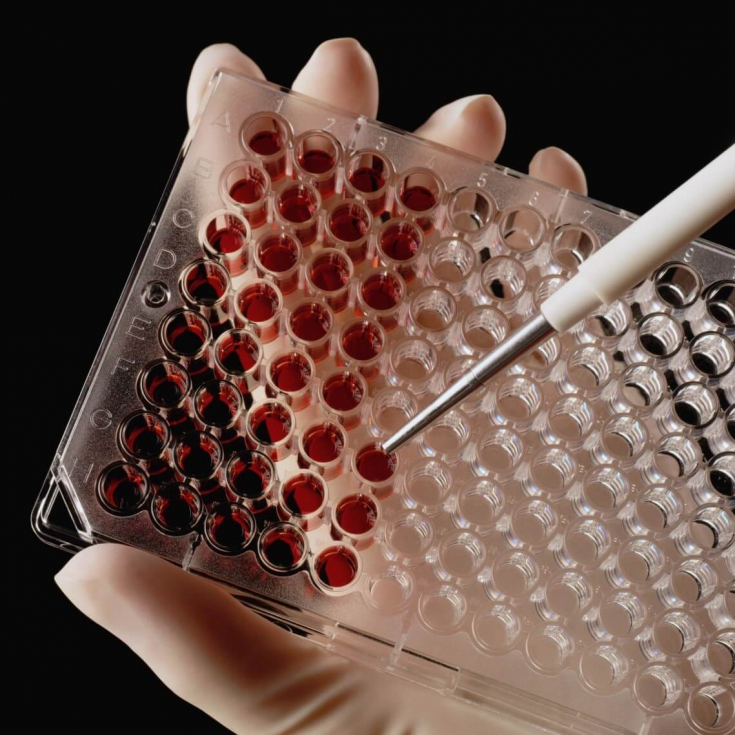Syphilis is caused by the spirochete Treponema pallidum and is a disease transmitted sexually.
It is manifested by the occurrence of skin lesions, ulcers on the genitals, as well as neurological symptoms.
After incomplete or incorrect treatment of the first symptoms, secondary symptoms appear, and this process is called secondary syphilis.
But there is also tertiary syphilis, which occurs when the patient has not completed the course of treatment at the stage of primary or secondary syphilis or if he received drugs in an incomplete dosage.
Read more on estet-portal.com how tertiary syphilis manifests itself.
- Characteristic features of the course of tertiary syphilis
- How does gummonous syphilis manifest itself in tertiary syphilis
- Clinical symptoms of tuberculous syphilis in tertiary syphilis
- Dangerous complications and diagnosis of tertiary syphilis
- Differential diagnosis and treatment of tertiary syphilisa
Characteristic features of the course of tertiary syphilis
On average, one third of patients with syphilis who go untreated develop tertiary syphilis.
Predisposing factors also increase the likelihood of tertiary syphilis, which include:
- senile or childhood age;
- chronic diseases;
- intoxication;
- alcoholism.
A patient who has developed tertiary syphilis is not contagious to others, since treponemas are deep in granulomas, dying when they decay.
Tertiary syphilis is characterized by a long course of the disease and long latent periods.
The onset of symptoms of tertiary syphilis begins after 8-10 years from the period of infection.
Characteristic manifestations on the skin in tertiary syphilis – tertiary syphilides that appear over the course of a month or years.
They do not cause any sensations and are not accompanied by an inflammatory reaction.
Syphilis are localized in limited areas of the skin, which is not typical for secondary syphilis, they slowly regress and leave scars after.
Manifestations of tertiary syphilis – gummy and tuberculous syphilisid.
Congenital syphilis – serious diagnosis for an unborn child
How does gummonous syphilis manifest itself in tertiary syphilis
Gummonous syphilis (syphilitic gumma) – usually solitary, but several gummas may occur in one patient.
Gumma — it is a painless subcutaneous nodule.
Most often, gumma in tertiary syphilis is localized on the anterior surface of the legs and forearms, on the area of the elbow and knee joints, on the forehead.
At first, such a node is not soldered to the surrounding tissues and is mobile.
Over time, the node increases in size and connects with the surrounding tissues, becomes immobile.
Further in the middle of the node a hole is formed, through which a liquid of gelatinous consistency is released.
When this hole is enlarged, ulcers are formed, at the bottom of which a necrotic rod is visualized.
After the rod is removed, the ulcer in tertiary syphilis heals with the formation of a retracted scar star-shaped.
But not always an ulcer forms in the gum. Variants of the course without the formation of an ulcer are possible, then the node decreases and is replaced by connective tissue.
Gummous ulcers in tertiary syphilis can damage other tissues (vascular, bone, muscle, cartilage) in addition to the skin, which leads to their destruction.
Syphilis can also be localized on the mucous membranes of the pharynx, soft palate, tongue or nose. With damage to the mucous membrane of the nasal passages, rhinitis develops, which is accompanied by purulent discharge from the nasal sinuses and impaired nasal breathing.
Co over time, the cartilaginous tissue begins to break down, and a characteristic saddle nose deformity is formed, followed by possible nosebleeds.
If tertiary syphilis affects the tongue, then glossitis develops, which is accompanied by difficulty speaking and chewing problems.
When the soft palate is affected, a nasal voice appears, and food can also enter the nasal cavity when chewedand into the nasal cavity.
Read more articles on Facebook!
Clinical symptoms of tuberculous syphilis in tertiary syphilis
Lumpy syphilis is a infiltrative nodule that forms in the thickness of the dermis and protrudes above the surface of the skin.
The size of such tubercles is 5-7 mm, they have a dense texture and brown-red color.
In tertiary syphilis, the nodules appear asymmetrically and in waves. Purge elements do not merge with each other.
Further, such tubercles become necrotic, and ulcers form in their place, which heal for a long time, leaving behind a hyperpigmented scar.
Further eruptions never appear at the site of skin atrophy.
Organ damage in tertiary syphilis develops 10 years after infection.
The cardiovascular system is most often affected with the development of myocarditis or aortitis.
Also may be affected: skeletal system, liver, stomach, intestines, kidneyski.
Secondary syphilis – dangerous enemy disguised as other diseases
Dangerous complications and diagnosis of tertiary syphilis
In a quarter of cases of tertiary syphilis, the patient dies from complications.
The most dangerous complication is syphilitic aortitis, which may be accompanied by aortic aneurysm.
Aneurysm compresses adjacent organs, bleeding.
Myocarditis in tertiary syphilis can occur with heart failure and the possibility of myocardial infarction.

Tertiary syphilis is diagnosed using laboratory tests.
Blood tests with the help of RIBT and RIF are considered to be the most informative studies. These tests for tertiary syphilis are positive in almost 100% of cases, while the RPR test shows a negative result in a third of cases.
To determine complications from the side of other systems and organs, I use CT, MRI, ultrasound, gastroscopy, rhinoscopy, lumbar puncture and other diagnostic methods.
In Search of the Causative Agent of Syphilis: A Mysterious Disease
Differential diagnosis and treatment of tertiary syphilis
for suspected tertiary syphilis is done with:
miliary tuberculosis;- skin cancer;
- indurative erythema;
- Scrofuloderma;
- leprosy;
- actinomycosis;
- lipomas.
is prescribed by a specialist. Usually given
a course of tetracyclineor erythromycin for 2 weeks. Followed by 2 courses of
penicillin.Duration of courses
is determined individually depending on the location and extent of damage. It is also advisable to use
preparationsbismuth. The treatment of tertiary syphilis is carried out under the control of laboratory indicators of the functioning of organs.






